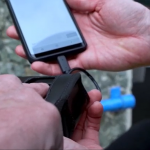Google upgrading ultrasonic biometric sensor for Pixel 10 smartphones
Google is upgrading the ultrasonic fingerprint biometric sensor for its latest flagship smartphone release.
In 2024 the Google Pixel 9 featured an ultrasonic fingerprint sensor for the first time, courtesy of Qualcomm. It was a significant upgrade from the optical sensors found in earlier models, while rival smartphone models such as the Samsung Galaxy S24 featured the same Qualcomm sensor with Suprema algorithms.
Qualcomm also integrated Precise Biometrics’ BioMatch Mobile software back in 2021, which provided an additional layer of protection against spoof attempts.
According to Android Headlines, the new upgraded ultrasonic fingerprint sensor will be even faster than the previous model’s while the new Pixel is expected to retain face biometric sensors. The improved speed will also mean better responsiveness when dealing with wet or unclean fingers.
Google is expected to release four Pixel phones later this summer. These are expected to be the Google Pixel 10, Pixel 10 Pro, Pixel 10 Pro XL, and Pixel 10 Pro Fold. A Made by Google event is scheduled for August 20 with the phones expected to start shipping August 28, according to Android Headlines.
The Google Pixel 10 will be the first release to be powered by the Google Tensor G5 processor, a chip by Google and the first Tensor processor manufactured by TSMC, with gains in performance expected for the 3nm chip.
With the Pixel 9 Google decided to replace the optical scanner from Goodix with ultrasonic scanners, following customer feedback highlighting issues with the current under-display fingerprint sensor, citing it as unreliable and slow.
The move marked a shift from optical scanners that rely on flashing bright light onto the fingerprint and which can be more prone to performance reductions from moisture or dirt. By adopting the Qualcomm 3D Sonic Gen 2, Google aimed to address these challenges with improved biometric sensor technology.
The 3D Sonic Gen 2 fingerprint sensor introduced last year utilizes ultrasonic pulses to map the ridges and valleys of a user’s fingerprint. By analyzing the reflections of these sound waves, the sensor creates a highly detailed 64mm2 reproduction of the scanned fingerprint.
Google is also reportedly adding Qi2 support to the Pixel 10 and an additional camera, bumping up the total number to three cameras compared to the Pixel 9’s two.
Article Topics
biometrics | fingerprint sensors | Google | mobile biometrics | Qualcomm | smartphones | ultrasonic fingerprints








Comments